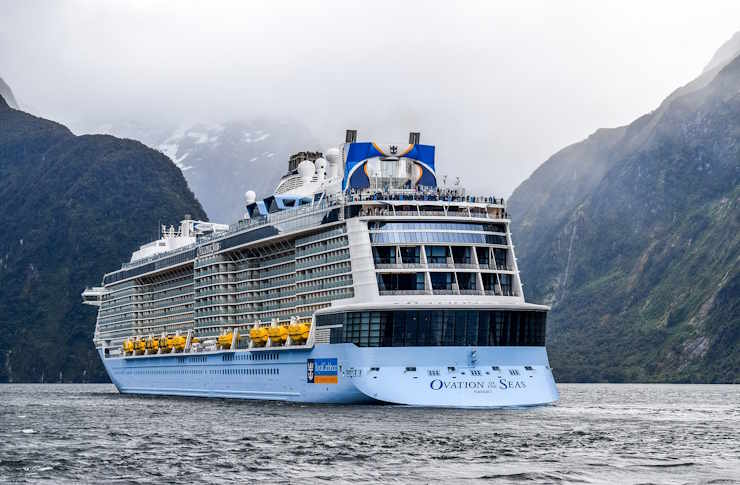A Comprehensive Guide to Understanding Private Jets in Switzerland
This guide provides an in-depth look at private jets, specifically focusing on their use in Switzerland. It covers the advantages of flying privately, key features to consider when selecting a jet, and the steps involved in booking and utilizing these aircraft for travel. Understanding these aspects can enhance the travel experience significantly.

Overview of Private Jets and Their Benefits in Switzerland
Switzerland’s unique geography and position as a global financial center make it an ideal location for private aviation. The country hosts several international airports equipped to handle private jets, including Zurich, Geneva, and Lugano, alongside smaller airfields in popular Alpine destinations like St. Moritz and Samedan.
Private jets offer numerous advantages over commercial aviation. Time savings represent one of the most significant benefits, as passengers can arrive at the airport minutes before departure, bypass security lines, and fly directly to their destination without layovers. Privacy is another crucial factor, allowing business discussions, relaxation, or family time without interruption. Flexibility in scheduling means flights can be arranged on short notice and adjusted according to passenger needs rather than airline timetables.
For business travelers in Switzerland’s banking, pharmaceutical, and technology sectors, private aviation enables same-day meetings across multiple European cities. Leisure travelers appreciate access to remote Alpine resorts that lack convenient commercial service. Additionally, private jets can accommodate special requirements such as pet transport, medical equipment, or customized catering.
Key Features to Consider When Choosing a Private Jet
Selecting the appropriate aircraft depends on several factors including passenger count, flight distance, luggage requirements, and budget considerations. Light jets like the Cessna Citation CJ3 or Embraer Phenom 300 accommodate four to eight passengers and work well for short European flights from Switzerland to destinations like Paris, Milan, or Munich. These aircraft typically cruise at speeds around 450 knots with ranges up to 2,000 nautical miles.
Midsize jets such as the Hawker 900XP or Cessna Citation XLS offer increased cabin space, seating six to nine passengers comfortably for flights up to four hours. These aircraft provide stand-up cabins and often include amenities like refreshment centers and enclosed lavatories, making them suitable for transcontinental European travel.
Heavy jets including the Gulfstream G550 or Bombardier Global 6000 represent the premium segment, accommodating eight to sixteen passengers with full amenities including sleeping quarters, conference areas, and full galleys. These aircraft can fly nonstop from Switzerland to destinations in Asia, Africa, or the Americas, with ranges exceeding 6,000 nautical miles.
Cabin configuration, avionics systems, safety records, aircraft age, and operational costs all factor into selection decisions. Switzerland’s stringent aviation regulations ensure high safety standards across all registered aircraft.
| Aircraft Category | Typical Models | Passenger Capacity | Range | Estimated Hourly Cost |
|---|---|---|---|---|
| Light Jets | Cessna Citation CJ3, Embraer Phenom 300 | 4-8 passengers | 1,500-2,000 nm | €2,500-€4,000 |
| Midsize Jets | Hawker 900XP, Citation XLS | 6-9 passengers | 2,000-3,000 nm | €4,000-€6,500 |
| Heavy Jets | Gulfstream G550, Global 6000 | 8-16 passengers | 6,000+ nm | €8,000-€12,000 |
| Ultra-Long Range | Gulfstream G650, Bombardier Global 7500 | 10-19 passengers | 7,000+ nm | €10,000-€15,000 |
Prices, rates, or cost estimates mentioned in this article are based on the latest available information but may change over time. Independent research is advised before making financial decisions.
The Process of Booking and Using Private Jets in Switzerland
Booking a private jet in Switzerland involves several options. Charter brokers act as intermediaries, accessing networks of aircraft operators to find suitable options based on client requirements. Direct charter companies own or manage fleets and handle bookings directly. Jet card programs offer prepaid flight hours with guaranteed availability and fixed hourly rates. Fractional ownership allows purchasing shares in specific aircraft, providing access based on ownership percentage.
The booking process typically begins with specifying departure and arrival locations, preferred dates and times, passenger count, and any special requirements. Operators provide quotes based on aircraft availability, positioning costs if the jet must reposition to the departure airport, landing fees, handling charges, and crew expenses. Switzerland’s airports charge varying fees, with major hubs generally more expensive than smaller regional fields.
Once booked, passengers receive flight details including departure location at the Fixed Base Operator terminal, which handles private aviation separately from commercial terminals. Arrival times can be as little as fifteen minutes before departure. Customs and immigration procedures for international flights are streamlined but still required. In-flight services can be customized, including catering preferences, ground transportation arrangements, and concierge services.
Operators must comply with European Aviation Safety Agency regulations and Swiss Federal Office of Civil Aviation requirements, ensuring aircraft maintenance, crew qualifications, and operational standards meet strict safety criteria. Insurance coverage, including liability and passenger protection, is mandatory for all commercial operations.
Understanding Costs and Pricing Structures
Private jet costs in Switzerland vary significantly based on multiple factors. Hourly charter rates depend on aircraft size and capabilities, as shown in the comparison table above. Additional expenses include positioning fees when aircraft must fly empty to reach the departure point, which can add several thousand euros to the total cost. Landing and handling fees at Swiss airports range from a few hundred to several thousand euros depending on the facility and aircraft size.
Overnight crew expenses, catering, ground transportation, and de-icing during winter months represent additional costs. International flights incur customs and immigration handling fees. Some operators charge fuel surcharges when prices fluctuate significantly.
Jet card programs and membership models offer predictable pricing with prepaid hours typically ranging from €150,000 to €500,000 for initial purchases, providing fixed hourly rates and guaranteed availability during peak periods. Fractional ownership requires substantial upfront investment, often exceeding €1,000,000 for shares in heavy jets, plus monthly management fees and hourly operating costs.
Empty leg flights, when aircraft reposition without passengers, offer discounted opportunities sometimes at fifty percent or more below standard charter rates, though scheduling flexibility is limited.
Regulatory and Environmental Considerations
Switzerland maintains strict aviation regulations aligned with European standards. All aircraft operating commercially must hold valid Air Operator Certificates, and crews must meet specific licensing and training requirements. Noise restrictions at certain airports limit operations during nighttime hours, particularly affecting Zurich and Geneva.
Environmental concerns increasingly influence private aviation. Carbon offset programs allow passengers to compensate for flight emissions through verified environmental projects. Sustainable aviation fuel, though currently limited in availability and more expensive than conventional jet fuel, represents a growing option for reducing carbon footprints. Some operators now provide detailed emissions reports and facilitate carbon-neutral flying options.
Swiss authorities continue updating regulations to balance aviation access with environmental protection, particularly in sensitive Alpine regions where noise and emissions impact local communities and ecosystems.
Conclusion
Private aviation in Switzerland offers sophisticated travelers and businesses unmatched flexibility, efficiency, and comfort. Understanding the various aircraft categories, booking processes, cost structures, and regulatory requirements enables informed decisions aligned with specific travel needs and budgets. Switzerland’s well-developed aviation infrastructure, combined with its central European location and commitment to safety standards, makes it an excellent base for private jet operations. Whether choosing on-demand charter, jet cards, or ownership models, thorough research and working with reputable operators ensures optimal experiences while managing costs effectively.




